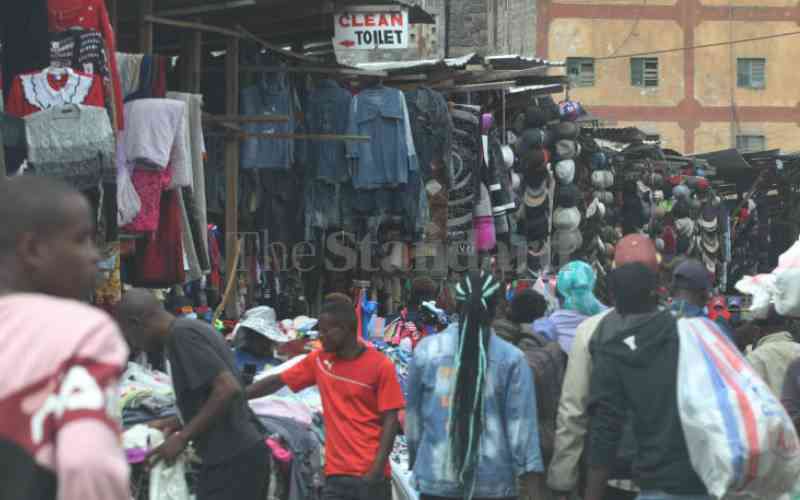The huge disruption caused by coronavirus has highlighted how much modern societies rely on electricity.
The pandemic is also revealing how electricity’s role is set to expand and evolve in the years to come.
Millions of people around the world are now confined to their homes, thanks to the coronavirus outbreak. They have now resorted to teleworking to do their jobs, e-commerce sites to shop, and streaming videos for entertainment. Reliable supply of electricity underpins these activities. Apart from that, electricity is also needed to power fridges, washing machines and light bulbs.
In many countries, electricity is critical for operating ventilators and other medical equipment used in treating the soaring numbers of sick people. In such an unsettling and rapidly evolving situation, electricity also ensures timely communication between governments and citizens, as well as between doctors and patients.
These services shouldn’t be taken for granted. In Africa, millions of people live without any access to electricity, making them far more vulnerable to disease and other dangers.
The coronavirus crisis reminds us of electricity’s indispensable role in our lives which is also a pointer to how that role is set to expand and evolve in the years to come.
Today’s society has an even bigger reliance on digital technology to carry out daily activities, and whose energy source is increasingly in the form of electricity. Power supply is more dependent than ever on wind and solar. In such a society, electricity security - the uninterrupted availability of energy sources at an affordable price - is the foundation of prosperity and stability. But ensuring that security requires action from governments.
In most economies that have taken strong measures in response to the coronavirus, electricity demand has declined by around 15 per cent. This is largely due to the fact that many factories and businesses have halted their operations. Some of these economies, such as Spain and California, are among major generators of wind and solar power in the world. If electricity demand falls quickly but weather conditions remain the same, the share of variable renewables such as wind and solar are likely to become higher than normal.
The recent drop in the demand of electricity gives us an opportunity to understand of cleaner electricity systems. This will include understanding the operational challenges that policy makers and regulators need to address to ensure reliable supply of electricity.
Power outages
Demand for electricity is low at the moment. However, system operators have to balance between demand and supply. In most cases, many people think power outages happen when demand is too high. However, the fact is that some of the major blackouts happened during periods of low demand.
When wind and solar power is sufficient, there is need to maintain flexibility to ramp up other sources of energy when the pattern of supply shifts. This includes during the sun sets. A high share of wind and solar power in a given moment also makes maintaining the stability of the power grid challenging.
System operators have developed ways of dealing with these challenges. However, in difficult times such as during lock downs in the event of a pandemic, new tests are created. For example, the abrupt slowdown of businesses and industrial activity across much of Europe has reduced electricity demand thereby depriving power systems a key source of flexibility. Power system flexibility is the ability to adapt to dynamic and changing conditions, for example, balancing supply and demand by the hour or minute, or deploying new generation and transmission resources over a period of years.
Under normal circumstances, large-scale electricity consumers such as factories, can adjust their usage to help balance the system. However, this option is hardly open today. This means there is need for policy makers to carefully assess availability of flexibility of power systems under extreme conditions.
New short-term forms of power, such as batteries, are on the rise. However, most electricity systems rely on natural gas power plants which can quickly ramp generation on short notice to provide flexibility. This underlines the critical role of gas in clean energy transitions. Today, most gas power plants lose money if they are only used to help the system adjust to shifts in demand. The low electricity demand in the current crisis is adding to these pressures. Hydropower, an often forgotten source of electricity generation, remains an essential source of flexibility.
Nuclear power is also key in ensuring electricity supply. Policy-makers need to design markets that reward different sources for their contributions to electricity security.
Electricity networks are the backbone of today’s power systems and they become even more important in clean energy transitions. Most wind and solar firms, and all flexible power plants, are connected to the main power grid. In both Europe and North America, these grids rely on aging transmission lines to supply electricity. Significant investments in these networks will be essential in the coming years.
Wind and solar can also provide flexibility, and systems will increasingly rely on them to do so. Wind power can be reduced when demand drops. Some solar power can be shut when there is more than needed. With time, electricity generation from renewable sources may no longer just follow the weather but will have to be managed in a manner that reduces costs and improve electricity security.
It is important to note most regions with strong confinement measures have avoided effects of extreme weather conditions. This includes California that is on a lock down after last year’s wildfires.
Electricity networks are more vulnerable than pipelines to extreme weather – a vital consideration for policy-makers as they plan for increasingly electrified energy systems. They should to make networks tougher by investing in underground cables and decentralised storage. We also need to design network layouts that are resilient to emergency situations such as hurricanes and floods.
Digital technologies
Despite the increasing use of digital technologies, the coronavirus-related crises have also reminded us of the essential role of skilled personnel. Network maintenance and repair is labour intensive and has to be done on site by workers including engineers. In most countries, governments have exempted network repair teams from the lockdowns. Organisations need to ensure their staff are safe as they carry out their critical duties. This means we must ensure electricity systems have sufficient resources not just of physical assets but also human capital.
Digitisation of the electricity sector has unlocked new opportunities to make systems more efficient. However, it has also made networks more vulnerable to cyberattacks which must be addressed urgently.
Electricity production is no longer a preserve of big utilities. Factories, households and businesses are installing solar panels. New digital technologies are enabling these smaller users to sell excess electricity to the wider grid. Many of these new producers may not have professional cybersecurity management tools. This calls for regulations to ensure minimum standards for software, equipment and service providers.
Today’s crisis also highlights the value of electricity infrastructure underpinning the response to corona pandemic.
 The Standard Group Plc is a multi-media organization with investments in media
platforms spanning newspaper print operations, television, radio broadcasting,
digital and online services. The Standard Group is recognized as a leading
multi-media house in Kenya with a key influence in matters of national and
international interest.
The Standard Group Plc is a multi-media organization with investments in media
platforms spanning newspaper print operations, television, radio broadcasting,
digital and online services. The Standard Group is recognized as a leading
multi-media house in Kenya with a key influence in matters of national and
international interest.
 The Standard Group Plc is a multi-media organization with investments in media
platforms spanning newspaper print operations, television, radio broadcasting,
digital and online services. The Standard Group is recognized as a leading
multi-media house in Kenya with a key influence in matters of national and
international interest.
The Standard Group Plc is a multi-media organization with investments in media
platforms spanning newspaper print operations, television, radio broadcasting,
digital and online services. The Standard Group is recognized as a leading
multi-media house in Kenya with a key influence in matters of national and
international interest.










